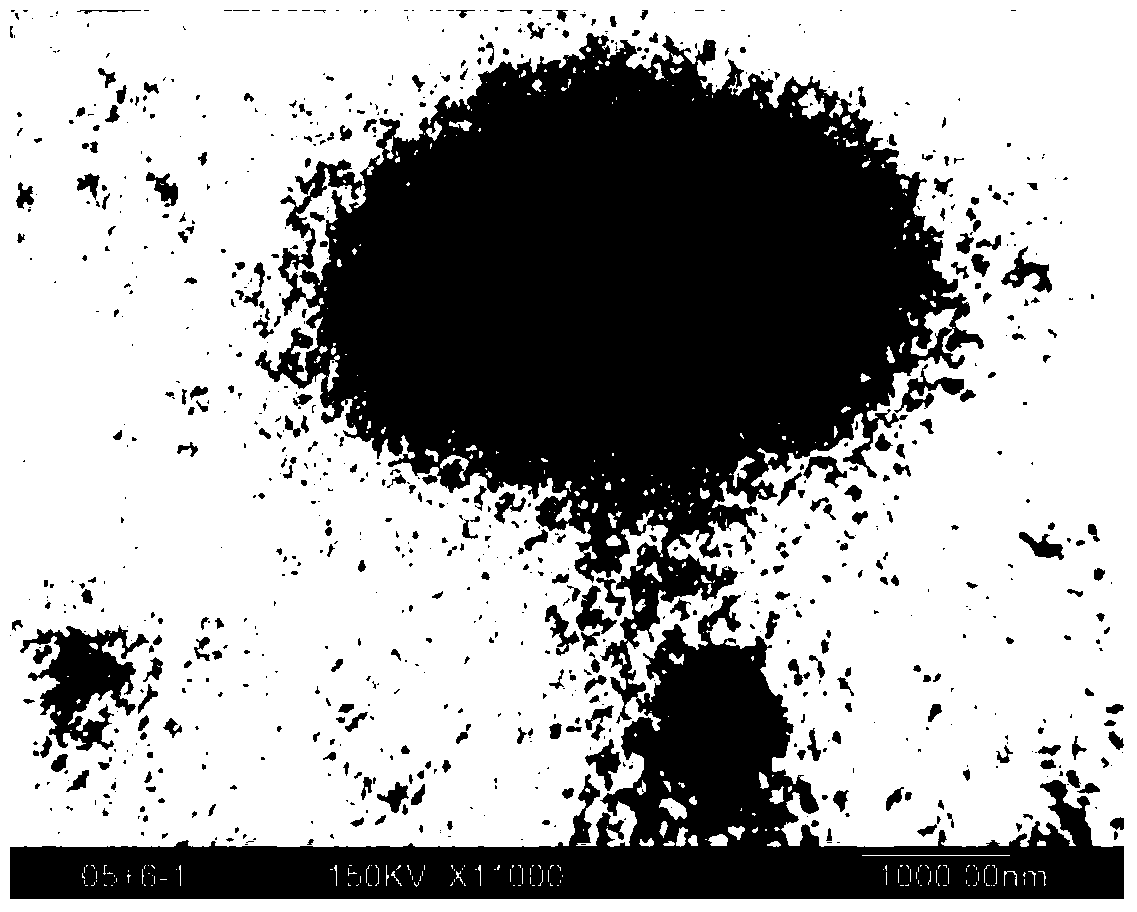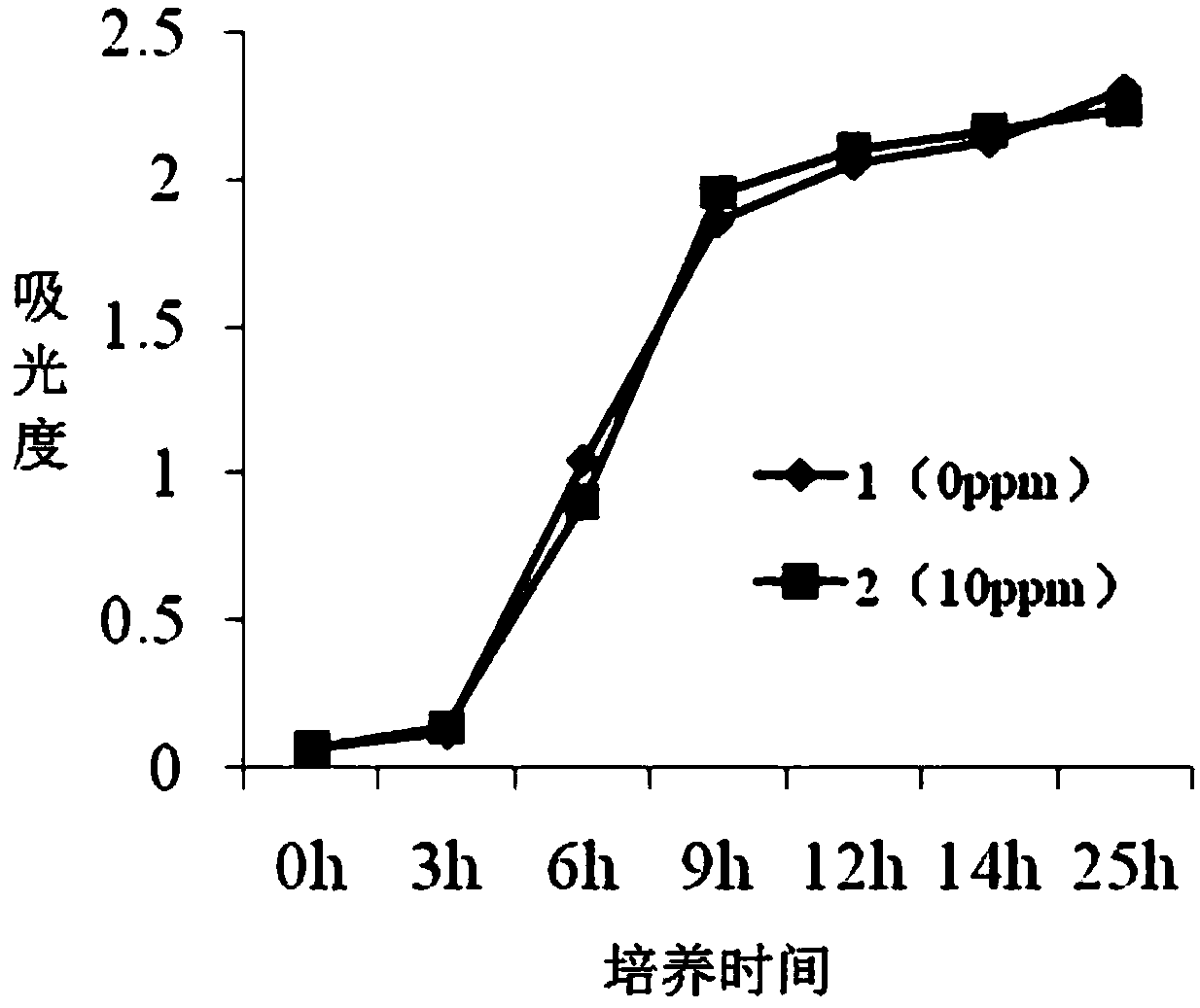Selenophilic microorganism wautersiella enshiensis YLX-1 and its application
A technology of YLX-1 and microorganisms, which is applied in the field of selenophilic microorganisms and its applications, and can solve the problems of unidentified microorganism species and characteristics
- Summary
- Abstract
- Description
- Claims
- Application Information
AI Technical Summary
Problems solved by technology
Method used
Image
Examples
Embodiment 1
[0052] The application of the microorganism described in the invention in the synthesis of organic selenium.
[0053]Inoculate the microorganism YLX-1 strain of the present invention into the TSB culture solution containing selenium (sodium selenite configuration) 1.5mg / L, cultivate it at 200r / min for 48 hours at normal temperature, and collect the thalline and supernatant by centrifugation. Then, liquid chromatography-atomic fluorescence spectrometry (LC-GA-AFS) was used to detect the content and form of selenium in the supernatant and bacteria, and the results showed that almost all of the supernatant was Se 4+ , and most of the bacteria are selenocystine (SeCys 2 )(table 5). This shows that the YLX-1 strain can absorb the inorganic selenium (Se) in the culture medium under the condition of 1.5mgSe / L 4+ ) into organic selenium (SeCys 2 ) and accumulate in the bacteria. Further collection of bacteria can be used as organic selenium for animal feed, etc., and can also be u...
Embodiment 2
[0058] The application of the microorganism described in the invention in the synthesis of organic selenium.
[0059] Inoculate the microorganism YLX-1 strain of the present invention into the TSB culture solution containing selenium (sodium selenite configuration) 10 mg / L, cultivate it at 200 r / min for 72 hours at normal temperature, and collect the bacteria and supernatant by centrifugation. Then, liquid chromatography-atomic fluorescence spectrometry (LC-GA-AFS) was used to detect the content and form of selenium in the supernatant and bacteria, and the results showed that almost all of the supernatant was Se 4+ , and most of the bacteria are selenocystine (SeCys 2 ), a small amount of methylselenocysteine (SeMeCys) and Se 4+ (Table 6). This shows that YLX-1 bacterial strain can under the condition of 10mg Se / L, the inorganic selenium (Se 4+ ) into organic selenium (SeCys 2 , SeMeCys), and accumulated into the bacteria. Further collection of bacteria can be used as o...
Embodiment 3
[0065] The application of the microorganism described in the invention in the synthesis of nanometer selenium.
[0066] The microorganism YLX-1 strain of the present invention is inoculated into the TSB culture solution containing selenium (sodium selenite configuration) 100mg / L, and cultivated at 200r / min at normal temperature for 24 hours, and the solution appears red and turbid obviously. After culturing for 48 hours, the cells and supernatant were collected by centrifugation, and it was found that the collected precipitate was a red suspension. Then, using liquid chromatography-atomic fluorescence spectrometry (LC-GA-AFS) and atomic fluorescence spectrometer, it was identified that the composition of the red suspension was almost elemental selenium by subtraction method. Further use of scanning electron microscopy combined with energy spectrum scattering analysis (SEM-EDS), the results showed that there were a large number of bacteria in the red suspension, and a large num...
PUM
| Property | Measurement | Unit |
|---|---|---|
| size | aaaaa | aaaaa |
Abstract
Description
Claims
Application Information
 Login to View More
Login to View More - R&D
- Intellectual Property
- Life Sciences
- Materials
- Tech Scout
- Unparalleled Data Quality
- Higher Quality Content
- 60% Fewer Hallucinations
Browse by: Latest US Patents, China's latest patents, Technical Efficacy Thesaurus, Application Domain, Technology Topic, Popular Technical Reports.
© 2025 PatSnap. All rights reserved.Legal|Privacy policy|Modern Slavery Act Transparency Statement|Sitemap|About US| Contact US: help@patsnap.com



